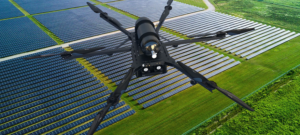 A Singapore-based company has launched a new hydrogen-based drone designed for large-scale, industrial maintenance inspections.
A Singapore-based company has launched a new hydrogen-based drone designed for large-scale, industrial maintenance inspections.
HES Energy Systems this week released Hycopter, a multi-rotor system that can keep precision cameras and other sensors in the air for much longer, opening up new commercial possibilities while reducing operational costs.
Designed at the company’s Austin, Texas facility, Hycopter can recharge in minutes using bottled industrial-grade hydrogen. Hycopter-type platforms could also enable product deliveries over much longer distances than are possible today. In the future, long range cargo drones would be deployed from autonomous hydrogen “droneports”.
HES merged its core technologies with a specially adapted multi-rotor design so that flight durations can extend to 3.5 hours.
A company release notes:
“Addressing short flight durations is one of the final frontiers in drone technology. HES has a long-standing reputation for producing the world’s lightest and most compact fuel cell systems, which can be as much as five times lighter than lithium batteries. Following a first world distance record set in the U.S. by a NASA-backed team more than 10 years ago, HES has been pushing the limits its energy storage technology increasingly further, working from Singapore on various UAV programs and with leading aerospace institutions around the world.”
Versions of Hycopter will emerge next in transitional-wing VTOL applications, and the same HES core technology is now being scaled up to power manned electric aviation, as well as other aerial mobility platforms under discussion with various international aerospace companies.
Li-Po batteries typically fuel most commercially available drones but are limited due to the fact that most only power, at best, a 30-minute flight. This means pilots must constantly change battery packs during a given deployment – an especially untenable situation for autonomous drones. For military-grade fixed-wing UAVs, diesel can be used but is harmful to the environment and difficult to store.
Clean-energy hydrogen fuel systems are carbon-free, renewable sources that may be a viable option for both rotor and winged drones going forward. Hydrogen fuel packs are produced by electrolysis to water, using energy from any source of energy including wind, solar, hydroelectric, or fossil sources.
Jason is a longstanding contributor to DroneLife with an avid interest in all things tech. He focuses on anti-drone technologies and the public safety sector; police, fire, and search and rescue.
Beginning his career as a journalist in 1996, Jason has since written and edited thousands of engaging news articles, blog posts, press releases and online content.
Email Jason
TWITTER:@JasonPReagan
Subscribe to DroneLife here.







[…] A Singapore-based company has launched a new hydrogen-based drone designed for large-scale, industrial maintenance inspections. HES Energy Systems this week released Hycopter, a multi-rotor system that can keep precision cameras and other sensors in the air for much longer, opening up new commercial possibilities while reducing operational costs. Designed at the company’s Austin, Texas facility, […] The post Hycopter Drone Can Stay Aloft Four Hours appeared first on DRONELIFE. See Original Article […]